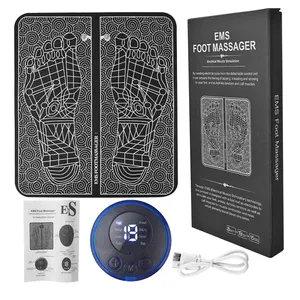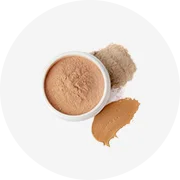Phổ biến trong ngành của bạn






Vương miện giành chiến thắng trang điểm Kit hộp cho các chuyên gia đầy đủ thiết lập hồi giáo Quà Tặng hijab pins thiết lập Bộ tóc giả cài đặt Kit ren hoàn chỉnh hộp giấy
0,03 US$ - 1,98 US$
Đơn hàng tối thiểu: 50 Cái







Thiết kế mới cổ điển chống trượt thảm cầu nguyện islam Quà Tặng cầu nguyện Mat tua cả hai bên hồi giáo cầu nguyện gấp mat
Sẵn sàng vận chuyển
2,08 US$ - 2,24 US$
Đơn hàng tối thiểu: 50 Cái
Vận chuyển mỗi chiếc: 3,20 US$







Nhà Máy Bán Buôn Hồi Giáo Món Quà Du Lịch Cầu Nguyện Mat Cho Hồi Giáo Hồi Giáo Cầu Nguyện Mat
1,50 US$ - 3,50 US$
Đơn hàng tối thiểu: 10 Cái







Tùy chỉnh 100% tinh khiết Dâu satin ngủ cap Womens satin nắp ca-pô cho ngủ & chăm sóc tóc đêm tóc bọc đàn hồi
3,19 US$ - 5,39 US$
Đơn hàng tối thiểu: 10 Cái







Tùy Chỉnh Cao Su PVC Vá Logo Trắng 6 Bảng Điều Chỉnh Hat Người Phụ Nữ Lưới Snapback Richardson 112 Trucker Mũ Mũ Với Sợi Dây Thừng Sẵn sàng vận chuyển
Sẵn sàng vận chuyển
 Sẵn sàng vận chuyển
Sẵn sàng vận chuyển1,90 US$ - 2,80 US$
Đơn hàng tối thiểu: 1 Cái
Vận chuyển mỗi chiếc: 21,11 US$


Bán Buôn Chất Lượng Cao Trắng Hồi Giáo Cầu Nguyện Hat Hồi Giáo Cap
Sẵn sàng vận chuyển
0,42 US$ - 30,00 US$
Đơn hàng tối thiểu: 1 Cái
Vận chuyển mỗi chiếc: 15,63 US$





Tùy Chỉnh Bangladesh Thêu Hồi Giáo Cap Đan Crochet Hồi Giáo Hồi Giáo Cầu Nguyện Dome Mũ Mũ Bán Buôn Made In China
1,80 US$ - 2,00 US$
Đơn hàng tối thiểu: 200 Cái






Tùy Chỉnh Mới Omani Trắng Hồi Giáo Hat Nắp Cầu Nguyện Cho Người Đàn Ông Hồi Giáo
2,08 US$
Đơn hàng tối thiểu: 100 Cái






Hot Bán New Kufi Tupi Rắn Màu Dệt Kim Cầu Nguyện Mũ 100% Bông Hồi Giáo Mũ Cho Nam Giới Từ Bangladesh Cho Tất Cả Bốn Mùa
0,50 US$ - 0,53 US$
Đơn hàng tối thiểu: 5000 Cái






Tùy chỉnh New omani Trắng hat hồi giáo cầu nguyện Cap cho người đàn ông hồi giáo bán buôn người đàn ông của thêu hồi giáo cầu nguyện thờ phượng mũ
1,99 US$ - 2,99 US$
Đơn hàng tối thiểu: 50 Cái






Limanying Cung Cấp Nhà Máy Giá Bán Hot Sản Xuất Nhanh Chóng Làm Khô Hồi Giáo Hat Kopiah Cầu Nguyện Cap Hồi Giáo Cap
Sẵn sàng vận chuyển
0,56 US$ - 1,00 US$
Đơn hàng tối thiểu: 10 Cái
Vận chuyển mỗi chiếc: 2,49 US$






Bán Chạy Mũ Hồi Giáo Nhanh Khô Sản Xuất Mũ Cầu Nguyện Kopiah Mũ Hồi Giáo Cho Nam
0,58 US$ - 1,21 US$
Đơn hàng tối thiểu: 50 Cái
Các tìm kiếm liên quan:
mũ cầu nguyện hồi giáo thủ côngmũ cầu nguyện arabicmũ cầu nguyện hồi giáo màu đenmũ cầu nguyện omanmũ cầu nguyện muslim tùy chỉnhhồi giáo cầu nguyện cap bán buônmũ cầu nguyện cho người hồi giáomũ cầu nguyện hồi giáo sindhimũ cầu nguyện hồi giáo ở ấn độmũ cầu nguyện nam hồi giáomũ cầu nguyện hồi giáo mớimũ hồi giáo người đàn ông cầu nguyệnmũ cầu nguyện nam hồi giáomũ cầu nguyện cho nammũ cầu nguyện crochet muslim






Người đàn ông hồi giáo namaz hat islam đồng bằng kufi cầu nguyện Pakistan Mũ Trắng, mũ cầu nguyện hồi giáo, Thổ Nhĩ Kỳ namaz topi
0,25 US$ - 0,50 US$
Đơn hàng tối thiểu: 500 Cái






Giá Tốt Nhất Bán Buôn Hồi Giáo Cầu Nguyện Cap Hồi Giáo Arab Thời Trang Mới Tùy Chỉnh Mũ Thoáng Khí Cổ Điển Màu Sắc Mới Mũ Cho Nam Giới OEM
3,50 US$ - 5,00 US$
Đơn hàng tối thiểu: 10 Cái






Bán buôn Arabic hồi giáo người đàn ông của hat thêu dân tộc hồi giáo cầu nguyện cap hồi giáo cap chất lượng hàng đầu đa màu sắc trực tiếp từ nhà máy
0,87 US$ - 1,99 US$
Đơn hàng tối thiểu: 100 Cái












Mũ Cầu Nguyện Người Hồi Giáo Nhiều Màu Sắc Tùy Chỉnh Mũ Cầu Nguyện Màu Trắng Hồi Giáo Nhanh Khô Bán Buôn
0,35 US$ - 0,75 US$
Đơn hàng tối thiểu: 60 Cái






New hot bán arab hồi giáo cầu nguyện mũ thêu trắng top trung đông dubai hồi giáo mũ cho nam giới
0,41 US$ - 0,57 US$
Đơn hàng tối thiểu: 200 Cái





Người Đàn Ông Hồi Giáo Cầu Nguyện Mũ Hồi Giáo Ramadan Do Thái Hồi Giáo Người Đàn Ông Mũ Trắng Ấm Hồi Giáo Mũ Cho Nam Giới
Sẵn sàng vận chuyển
0,75 US$ - 1,00 US$
Đơn hàng tối thiểu: 10 Cái
Vận chuyển mỗi chiếc: 3,20 US$






Bán buôn lưới Dome thêu Arabic Dubai Malaysia Mũ trắng cho nam giới Net hồi giáo cầu nguyện cap
1,21 US$ - 1,78 US$
Đơn hàng tối thiểu: 50 Cái






Bán buôn lưới Dome thêu Arabic Dubai Malaysia Mũ trắng cho nam giới Net hồi giáo cầu nguyện cap
1,21 US$ - 1,78 US$
Đơn hàng tối thiểu: 50 Cái





Dịch Vụ OEM Trắng Bông Đàn Hồi Handmade Crochet Hồi Giáo Hồi Giáo Đan Kufi Topi Cầu Nguyện Hat Crochet Taqiyah Takke Skull Cap
2,99 US$ - 3,99 US$
Đơn hàng tối thiểu: 20 Cái






2023 thiết kế mới hồi giáo cap cho nam giới Mens cầu nguyện hat hồi giáo Arabian islam mũ
Sẵn sàng vận chuyển
0,13 US$ - 0,19 US$
Đơn hàng tối thiểu: 2 Cái
Vận chuyển mỗi chiếc: 6,06 US$






Hot Bán Hồi Giáo Hồi Giáo Cầu Nguyện Cap Crochet Kufi Hat Đàn Hồi Rắn Màu Dệt Kim Jacquard Hồi Giáo Kufi Hat Cho Nam Giới
Sẵn sàng vận chuyển
1,12 US$ - 1,24 US$
Đơn hàng tối thiểu: 20 Cái
Vận chuyển mỗi chiếc: 0,97 US$






New Hot Bán Arab hồi giáo cầu nguyện mũ thêu trắng Top Trung Đông Dubai hồi giáo mũ cho nam giới
Sẵn sàng vận chuyển
0,46 US$ - 0,63 US$
Đơn hàng tối thiểu: 20 Cái
Vận chuyển mỗi chiếc: 1,09 US$





Hồi giáo Polyester Cap trắng nâu vàng tay móc kippah hat thêu hồi giáo cầu nguyện mũ cho nam giới rắn màu sắc của

1,00 US$ - 1,23 US$
Đơn hàng tối thiểu: 50 Cái




Người đàn ông hồi giáo mới phong cách omani cầu nguyện Mũ hồi giáo topi cap mới taqiyah Thiết kế thời ĐạI Thêu cầu nguyện mũ khác HA
0,99 US$ - 3,99 US$
Đơn hàng tối thiểu: 50 Cái






Mũ Cầu Nguyện Hồi Giáo Nam Mũ Sọ Hồi Giáo Kufi Đen Trắng
Sẵn sàng vận chuyển
1,00 US$ - 3,00 US$
Đơn hàng tối thiểu: 100 Cái
Vận chuyển mỗi chiếc: 3,05 US$






Mùa Đông Dệt Kim Người Đàn Ông Hồi Giáo Cầu Nguyện Mũ Hồi Giáo Ramadan Người Do Thái Kippah Đầu Ấm Bọc Mũ Mitzvah Hat
Sẵn sàng vận chuyển
2,25 US$ - 3,95 US$
Đơn hàng tối thiểu: 20 Cái
Vận chuyển mỗi chiếc: 2,28 US$

Mũ Cầu Nguyện Đàn Ông Hồi Giáo Topi, Mũ Hồi Giáo, Mũ Hồi Giáo Trắng
0,60 US$ - 1,99 US$
Đơn hàng tối thiểu: 100 Cái






Lựa Chọn Mũ Dệt Kim Hồi Giáo Hồi Giáo Kufi Tartan Thiết Kế Mũ Cầu Nguyện Hồi Giáo Cho Nam Giới
2,92 US$ - 2,99 US$
Đơn hàng tối thiểu: 20 Cái






Hồi giáo hat bán buôn Ai Cập Thổ Nhĩ Kỳ phụ nữ Arab Chất lượng cao hồi giáo cầu nguyện Hat Cap hồi giáo SULTAN cầu nguyện cap hồi giáo
1,52 US$ - 1,90 US$
Đơn hàng tối thiểu: 1000 Cái






Mũ Nam Hồi Giáo Hui Thêu Chất Lượng Cao Thiết Kế Mới Nhất 2022 Mũ Thờ Phượng Hồi Giáo Mũ Cầu Nguyện Dày
Sẵn sàng vận chuyển
0,13 US$ - 0,19 US$
Đơn hàng tối thiểu: 1 Cái
Vận chuyển mỗi chiếc: 7,62 US$






Mũ Baotou Hồi Giáo Cho Nam Màu Trắng Bán Sỉ 2022 Mũ Cầu Nguyện Đan Móc Taqiyah Mũ Hijab Hồi Giáo Cho Nam
Sẵn sàng vận chuyển
0,69 US$ - 1,50 US$
Đơn hàng tối thiểu: 10 Cái
Vận chuyển mỗi chiếc: 9,46 US$


Chất lượng cao handmade cap kufi hồi giáo Mũ hồi giáo cầu nguyện người đàn ông sọ Mens kufis topi tại nhà máy giá từ Ấn Độ.
2,00 US$ - 4,00 US$
Đơn hàng tối thiểu: 10 Cái






Mũ Nỉ Đỏ Fez Úc 100% Hàng Mới Về Cho Nam Thêu Cầu Nguyện Hồi Giáo Đám Cưới Mũ Đạo Hồi
1,37 US$ - 1,63 US$
Đơn hàng tối thiểu: 100 Cái






Mũ Đội Đầu Kufi Cầu Nguyện Cho Nam Mũ Beanie Slamic Mũ Đầu Lâu Mũ Hồi Giáo Nam Thêu Kofia Topi
0,85 US$ - 1,58 US$
Đơn hàng tối thiểu: 50 Cái






Mũ Hồi Giáo Tùy Chỉnh 2022 Mũ Len Dệt Kim Mũ Mùa Hè Mũ Trùm Đầu Kufi Dành Cho Nam Unisex Mũ Thiết Kế Mũ Rắn Với Thêu Tay
Sẵn sàng vận chuyển
0,60 US$ - 1,50 US$
Đơn hàng tối thiểu: 24 Cái
Vận chuyển mỗi chiếc: 1,65 US$






Nhà Cung Cấp Trung Quốc Bán Buôn Giá Rẻ Giá Trắng Hồi Giáo Hồi Giáo Cầu Nguyện Hat Cap
0,42 US$ - 0,60 US$
Đơn hàng tối thiểu: 1200 Cái





Bán Chạy Nhất Tùy Chỉnh Thêu Hồi Giáo Cầu Nguyện Cap Flat Top Dome Tùy Chỉnh Ả Rập Cap Hat Hồi Giáo Cap Cho Nam Giới Trung Quốc Bán Buôn
1,80 US$ - 2,00 US$
Đơn hàng tối thiểu: 200 Cái
Các danh mục hàng đầu
Giới thiệu về mũ cầu nguyện hồi giáo trắng
Tìm kiếm mũ cầu nguyện hồi giáo trắng. trên Alibaba.com và duyệt qua nhiều lựa chọn về các nhà cung cấp tuyệt vời. Tiết kiệm tiền khi dự trữ một thành phần để sử dụng trong một số mặt hàng thực phẩm khác nhau. Phần lớn mũ cầu nguyện hồi giáo trắng. có dạng bột dễ hòa tan và dễ trộn với các thành phần khác. Sử dụng như một chất thay thế thơm ngon, không chứa caffein cho cà phê hoặc để làm một số loại thuốc thảo dược. Các nhà sản xuất thực phẩm và công ty dược phẩm có thể hưởng lợi từ việc sử dụng thành phần hoàn toàn tự nhiên này.
Tất cả mũ cầu nguyện hồi giáo trắng. có mức độ tinh khiết rất cao, giúp sản phẩm cuối cùng không có các chất gây ô nhiễm tiềm ẩn. Bột màu trắng giữ được vẻ trung tính khi trộn các thành phần và sẽ không ảnh hưởng đến màu sắc. Các chất chiết xuất sẫm màu hơn cũng có sẵn và có thể mang lại bóng râm bổ sung trong thành phần sản phẩm cuối cùng. Khi uống vào cơ thể, bột inulin có trong sản phẩm có thể có tác dụng lợi khuẩn giúp cải thiện sức khỏe hệ tiêu hóa theo thời gian.
mũ cầu nguyện hồi giáo trắng được bán trên Alibaba.com tuân thủ các tiêu chuẩn cấp thực phẩm và cấp y tế để đảm bảo an toàn cho khách hàng. Các nhà cung cấp thường sẽ đóng gói sản phẩm trong túi hút chân không để bảo quản độ tươi và chất lượng. Đặc biệt những lô hàng lớn thường được đựng trong thùng phuy dễ vận chuyển. Hầu hết các chất chiết xuất sẽ mang lại thêm hương vị ngọt ngào để tạo cho công thức một hương vị dễ chịu hơn.
Duyệt qua mũ cầu nguyện hồi giáo trắng. trên Alibaba.com và tận hưởng chi phí thấp của một thành phần chính quan trọng được sử dụng trong các loại dược phẩm và đồ uống tốt cho sức khỏe. Cho dù người tiêu dùng cần cải thiện sức khỏe hệ tiêu hóa hoặc tạo ra đồ uống có hương vị cà phê mà không có caffeine, thì vẫn có rất nhiều lựa chọn có sẵn. Mua sắm xung quanh và tìm các nhà cung cấp tốt nhất có thể giao hàng với bất kỳ số lượng nào cần thiết.
Tất cả mũ cầu nguyện hồi giáo trắng. có mức độ tinh khiết rất cao, giúp sản phẩm cuối cùng không có các chất gây ô nhiễm tiềm ẩn. Bột màu trắng giữ được vẻ trung tính khi trộn các thành phần và sẽ không ảnh hưởng đến màu sắc. Các chất chiết xuất sẫm màu hơn cũng có sẵn và có thể mang lại bóng râm bổ sung trong thành phần sản phẩm cuối cùng. Khi uống vào cơ thể, bột inulin có trong sản phẩm có thể có tác dụng lợi khuẩn giúp cải thiện sức khỏe hệ tiêu hóa theo thời gian.
mũ cầu nguyện hồi giáo trắng được bán trên Alibaba.com tuân thủ các tiêu chuẩn cấp thực phẩm và cấp y tế để đảm bảo an toàn cho khách hàng. Các nhà cung cấp thường sẽ đóng gói sản phẩm trong túi hút chân không để bảo quản độ tươi và chất lượng. Đặc biệt những lô hàng lớn thường được đựng trong thùng phuy dễ vận chuyển. Hầu hết các chất chiết xuất sẽ mang lại thêm hương vị ngọt ngào để tạo cho công thức một hương vị dễ chịu hơn.
Duyệt qua mũ cầu nguyện hồi giáo trắng. trên Alibaba.com và tận hưởng chi phí thấp của một thành phần chính quan trọng được sử dụng trong các loại dược phẩm và đồ uống tốt cho sức khỏe. Cho dù người tiêu dùng cần cải thiện sức khỏe hệ tiêu hóa hoặc tạo ra đồ uống có hương vị cà phê mà không có caffeine, thì vẫn có rất nhiều lựa chọn có sẵn. Mua sắm xung quanh và tìm các nhà cung cấp tốt nhất có thể giao hàng với bất kỳ số lượng nào cần thiết.











